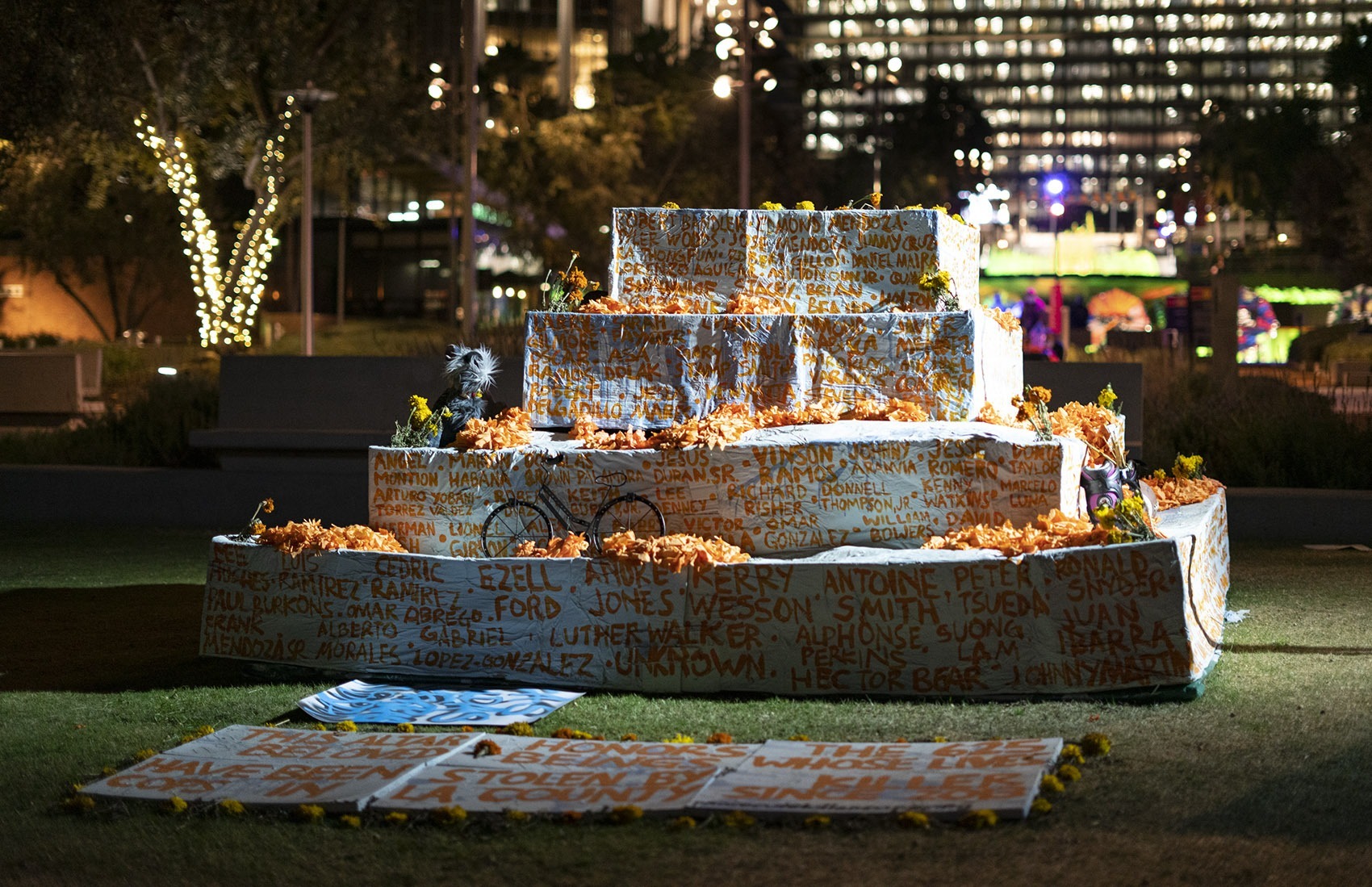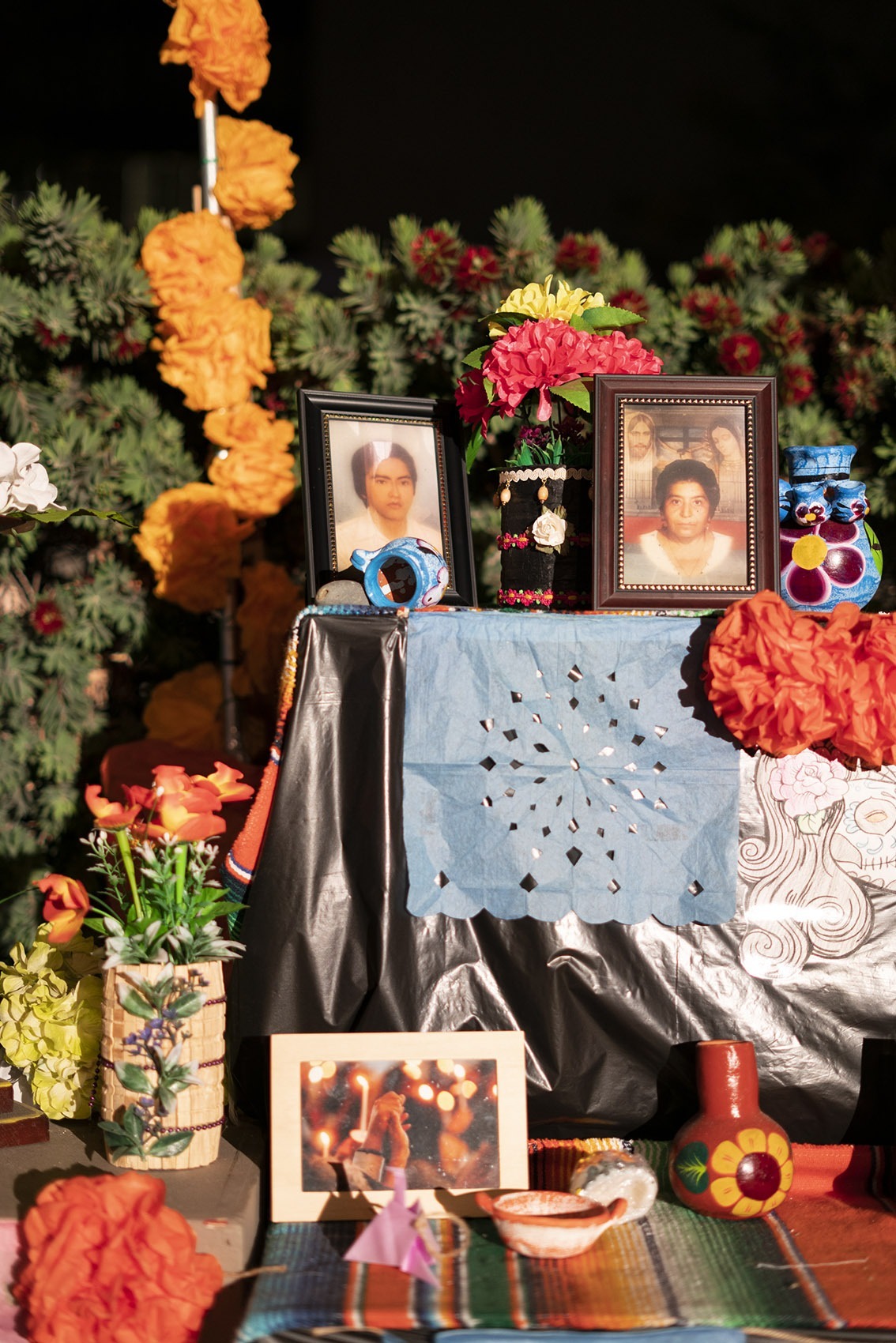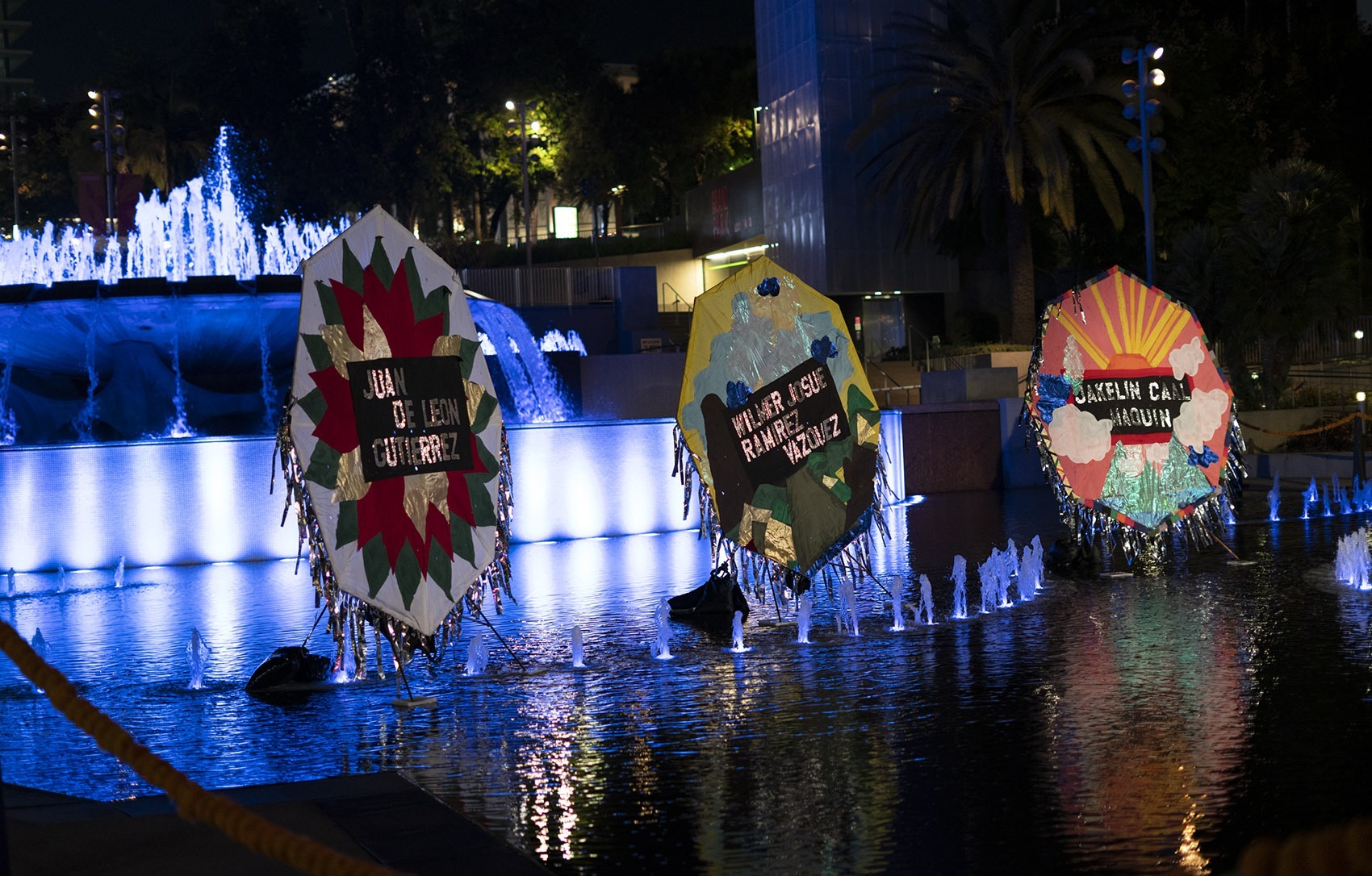
An altar curated by Black Lives Matter L.A. (BLMLA) honors victims of police killings On October 30, 2020. BLMLA is one of several community partners to participate in this years Dia de los Muertos celebration at Grand Park.
For many years the celebration of Dia De Los Muertos, the Day of the Dead, has been a time for Angelenos to come together to celebrate Chicano identity and the lives of their loved ones who have passed away.
The events that have transpired over the past year have not halted these iconic festivities. If anything, the COVID-19 pandemic and the public’s awareness of the Black Lives Matter (BLM) movement have amplified the need for a celebration of the lives and cultures of ethnic minorities, and this is exactly what the artists for the annual Noche De Ofrendas altars exhibit at Grand Park set out to accomplish.
Many Day of the Dead events were hosted virtually to ensure the safety of the participants in adherence to social distancing recommendations. However, Noche De Ofrendas remained open to walk through visits.
The exhibit was curated by Self Help Graphics, an LA-based printmaking organization focused on supporting and uplifting Chicano art and culture. From Oct. 24 to Nov. 4, multiple ofrendas, or altars, were placed throughout Grand Park. Each altar was lavishly decorated with relevant objects and symbols to represent the people and the organizations that inspired it.
The striking altar entitled “2020 Memorial to our Resilience,” by artist Ofelia Esparza and her daughter Rosanna Esparza Ahrens, was piled high with intricately woven paper marigolds and photos of those who have passed away.
“All of the flowers that you see are made by hand, and those were made with the intention of honoring every loved one who has passed on during this time in 2020,” Ahrens explained in a pre-recorded audio accompaniment for the exhibit.
“This altar is dedicated to all of the loved ones, everyone, that has fallen under the COVID virus. We’re here to honor them and to say ‘your lives matter.’”
Many of the other altars were also dripping with traditional Dia De Los Muertos imagery, such as brightly colored Calavera style skulls and ancestral offerings of food and beloved objects.

Downtown Día de los Muertos installations adorn Grand Park in Los Angeles on October 30, 2020. Eleven altars are located throughout the park and were installed in collaboration with artist and community partners.
Some had a more graphic and modernized design, like the altar created by Los Angeles BLM. This particular piece was eye-catching and thought-provoking. The piece was a tiered platform, painted white, and completely covered with the names of the 622 people who have been killed by police officers in Los Angeles since 2013. The top of the structure was covered with 622 marigolds, to represent the victims.
“For the construction of the altar, we had a flower making ceremony at one of the Jackie Lacey protests, as a way to collectively create the altar while honoring the dead during the libations and while speaking their names,” said an LA BLM representative in their pre-recorded altar accompaniment.
According to the sign placed next to the altar, the website that LA BLM used to find all of the names of the victims for this piece can be found here. The site is essentially a database where users can find the names of the deceased as well as the names of the “killer cops” responsible for their deaths.
Other smaller altars included the Community Power Collective, which honored workers and public housing tenants; the East Los Angeles Women’s Center youth, for those lost to domestic and sexual violence; Eastside LEADS, which stood for those who have died from COVID-19; Corazón del Pueblo and artist Xochitl Palomera, for the lives of all womxn whose lives were taken as a result of femicide or other gender-based violence; and Mi Estori: Artist Collective, whose altar honored the lives of LGBTQ+ people who were victims of hate crimes or systemic neglect.
The altar created by South Central Farm focused on food justice and “the role of land use in our food systems.” Naturally, this meant that the decor was almost entirely made from traditional and indigenous Mexican food, produce, and goods. There were exquisite flower designs made of beans on the floor framed by vibrant marigolds, and bountiful offerings of fruits, nuts, and potatoes climbing the tiers of the ofrenda.
The Grand Park splash pad had been fenced off and turned into a kite display by artists Jackie Amezquita and Julio César Toruño. The large and colorful kites represented the lives of six children who had lost their lives in ICE detention centers.
“On Nov. 1, it is a tradition for Guatemalans to take food to their dead and decorate the graves. According to the elders, the kites help guide the good spirits to the sky, so they could find peace,” Amezquita explained in her recording.
The final altar, entitled “Los Angeles: Que No Se Olvidan” was created by multidisciplinary artist Consuelo G. Flores. The phrase “que no se olvidan” translates to “those who are not forgotten.”
This large altar was built in memory of the 43 students of Ayotzinapa, who went missing in Mexico in 2014, and other victims of murder in Los Angeles whose cases are also unsolved. The altar was wrapped with a string of all the photos of the missing students. Dotted all over the altar were small offerings of food, and framed pictures of loved ones. Next to the altar on the floor, there was a small wicker basket with a note on the top, encouraging people to write letters to their ancestors to leave at the altar.

Kites at Grand Park Splash Pad bear the names of migrant children who have died in ICE custody in Los Angeles on October 30, 2020. Each installation, curated in collaboration with artist and community partners, focuses on a theme or cause.
“This year is unique, in that there were thousands of people who lost their lives due to the pandemic,” Flores explained. “Still, we must also remember the others we’ve lost so that they remain alive if only in our memories…their lives were important and they offered us perspective, understanding, friendship, connection, and love.”
For more information about future Self Help Graphics events, including virtual Ofrendas and Chicano art exhibits, check here.
- Blotter: Stay away order and escorting off campus - December 7, 2020
- Dia De Los Muertos at Grand Park is alive and more relevant than ever - November 4, 2020
- PCC campus closed due to Bobcat Fire - September 10, 2020
